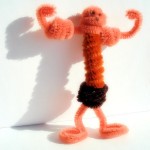Two Things You Probably Don’t Understand About Learning to Play Music
 Part of our business is a music school for children, so we interact with a lot of kids and their parents on the topic of learning to play music. Our approach emphasizes playing in a band with a goal of performing for an audience, so with new students our focus is on playing versus theory. Some parents seem to wonder if a de-emphasis of theory is a good idea, or ask why we don’t use more books or printed music with new students. I was pondering how best to explain this one day while driving my daughters to their ice skating lesson and then chilling (literally) in the bleachers to watch. As I sat there chatting with some other parents it occurred to me that none of these parents thought an ice skating book was necessary. Why? Because they see ice skating as primarily a physical activity, not a mental activity, and that’s what I think they misunderstand about learning to play music and a musical instrument – this is a physical activity. I’m speaking here of new students, where the majority of learnings are physical. Our drum students are working on building strength and endurance in their arms, and coordinating hands, arms, legs and feet. Our guitar, bass and piano students are developing speed, flexibility, strength and agility in their arms, hands, fingers and wrists. Now as students advance we introduce theoretical elements, but to continue the metaphor, we don’t want to teach ice skaters about wind resistance until they can reliably go around the rink.
Part of our business is a music school for children, so we interact with a lot of kids and their parents on the topic of learning to play music. Our approach emphasizes playing in a band with a goal of performing for an audience, so with new students our focus is on playing versus theory. Some parents seem to wonder if a de-emphasis of theory is a good idea, or ask why we don’t use more books or printed music with new students. I was pondering how best to explain this one day while driving my daughters to their ice skating lesson and then chilling (literally) in the bleachers to watch. As I sat there chatting with some other parents it occurred to me that none of these parents thought an ice skating book was necessary. Why? Because they see ice skating as primarily a physical activity, not a mental activity, and that’s what I think they misunderstand about learning to play music and a musical instrument – this is a physical activity. I’m speaking here of new students, where the majority of learnings are physical. Our drum students are working on building strength and endurance in their arms, and coordinating hands, arms, legs and feet. Our guitar, bass and piano students are developing speed, flexibility, strength and agility in their arms, hands, fingers and wrists. Now as students advance we introduce theoretical elements, but to continue the metaphor, we don’t want to teach ice skaters about wind resistance until they can reliably go around the rink.
So, the first thing parents don’t understand about learning to play music is that this is primarily a physical activity. I think this understanding is particularly important in understanding what is needed in practice. Like any physical activity, the best learning happens with repetitive practice followed by an interval of rest – then, as they say, wash, rinse, repeat.
The second thing parents don’t understand is how much training of the ear is necessary, and to help their children develop their ears. In our program, where the emphasis is on playing in a band and performing, students need to hear chord changes as they happen, and to develop the confidence to trust that they know where they are in a song. A band can’t stop and restart for one member who’s lost their place, particularly during a performance. This is why we emphasize learning their parts by ear, rather than playing from printed music. When you have to be able to play your part without the crutch of a printed score in front of you, it drives the development of the ear and listening skills. At a basic level, training the ear can be learned by learning songs and identifying parts while listening to music. Identifying that a tune is a 12-bar blues is a good starting goal. At a more advanced level, ear training can get quite advanced and a means to introduce theory. The jazz blog, “I Was Doing All Right”, has free ear training tools that are good for this purpose, as a well as being a good source for jazz improvisation.
Learning to Play Music
Nothing satisfies parents of music students more than hearing their child actually play music. Parents can help achieve this goal by emphasizing the physical aspects of learning to play music and the instrument, and helping their child learn the basic listening skills required of musicians.
Photo credit: Bob.Fornal / Foter.com / CC BY-NC-SA
Category: Instrument Practice
